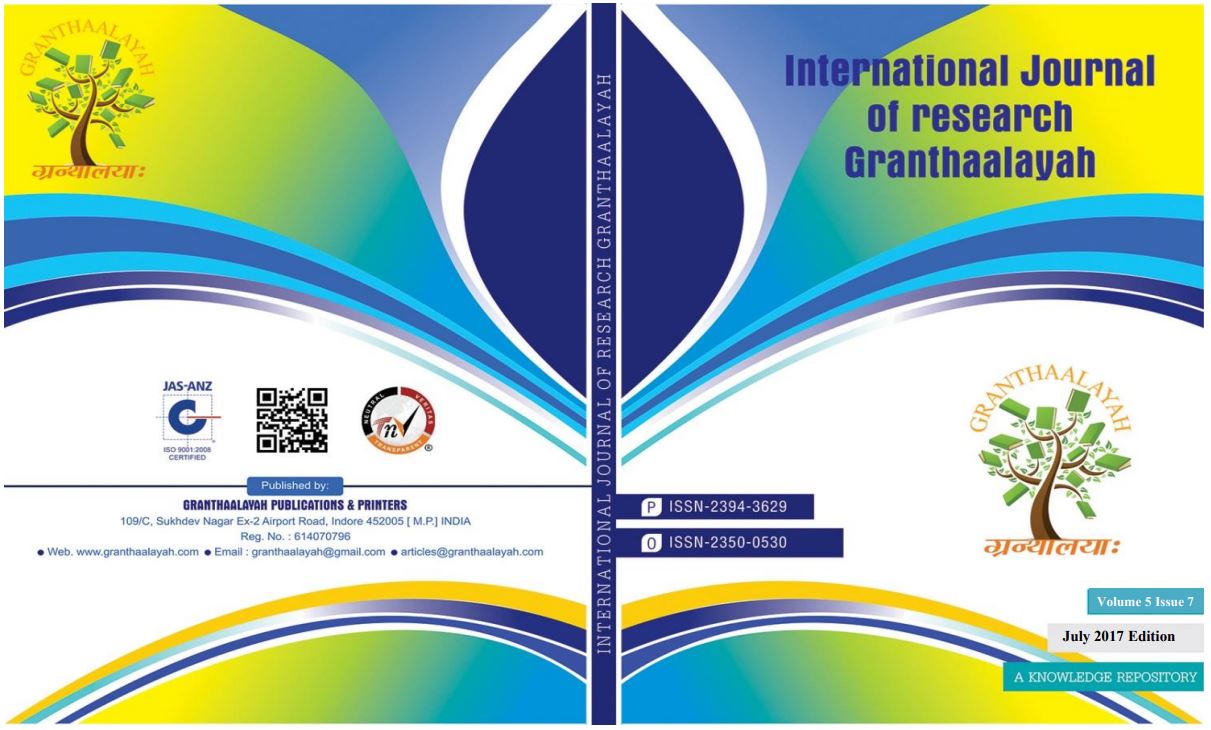ATAL BIHARI VAJPAYEE'S CONTRIBUTION TO INDIA'S FOREIGN POLICY: A REALISTIC PLURALIST APPROACH
DOI:
https://doi.org/10.29121/granthaalayah.v5.i7.2017.6350Keywords:
Realism, Diplomacy, Foreign Policy, Pluralism, Security InterestsAbstract [English]
This study analyses India's foreign policy during Atal Bihari Vajpayee's tenure as Prime Minister from the perspective of realistic pluralism. It argues that after the 1998 nuclear test, India adopted a nuanced and realistic approach to its foreign policy, the main objective of which was the attainment of the country's fundamental interests. The characteristic of this policy was that it actively faced contemporary challenges such as neo-liberal globalisation, terrorism, disarmament, changing international order, weakening of multilateral institutions and the emergence of new regionalism. India adopted a pluralistic pragmatic approach to deal with these challenges, which focused on protecting security interests along with economic progress. Additionally, the policy aimed to elevate India's status as an emerging global power while relentlessly advocating its core principles. The study also explains how a political party with a right-wing ideology assumed leadership amid the failure of the Congress Party to meet the aspirations of the people while coming to power. This article examines the main arguments made in this framework and their implementation by Vajpayee. Finally, the strategies adopted by Vajpayee and their potential impact on India's foreign policy in the future are assessed.
Downloads
References
ठाकुरता, पी. जी. (2002)। Ideological Contradictions in an Era of Coalitions: Economic Policy Confusion in the Vajpayee Government. ग्लोबल बिज़नेस रिव्यू, 3(2), 201-223. DOI: https://doi.org/10.1177/097215090200300203
चंदर, एन. जे. (2004)। Coalition politics: the Indian experience. कॉन्सेप्ट पब्लिशिंग कंपनी।
शर्मा, एस. आर., गजरानी, एस., एवं बख्शी, एस. आर. (संपा०)। (1998)। Sonia Gandhi: The President of AICC (खंड 4)। ए.पी.एच. पब्लिशिंग।
सिंह, एम. जी. जे. (2000)। With Honour & Glory: Wars fought by India 1947-1999. लांसर पब्लिशर्स।
वर्मा, एन. एम. पी., एवं साहू, आर. पी. (2024)। India’s Foreign Policy during Prime Minister Atal Bihari Vajpayee. ब्रिटिश जर्नल ऑफ मल्टीडिसिप्लिनरी एंड एडवांस्ड स्टडीज, 5(1), 170-186. DOI: https://doi.org/10.37745/bjmas.2022.0430
वाजपेयी, अ. बि. (1978)। India's foreign policy today. इंटरनेशनल स्टडीज़, 17(3-4), 379-388. DOI: https://doi.org/10.1177/002088177801700301
ठाकुर, आर. (1998)। A Changing of the Guard in India. एशियन सर्वे, 38(6), 603-623. DOI: https://doi.org/10.2307/2645842
उल्लेख, एन. पी. (2018)। The untold Vajpayee: Politician and paradox. रैंडम हाउस इंडिया।
चौधरी, ए. (2023)। Vajpayee: The Ascent of the Hindu Right, 1924–1977. पैन मैकमिलन।
सिंह, के. (2007)। Prime Minister's Office: A Critical Analysis. द इंडियन जर्नल ऑफ पॉलिटिकल साइंस, 629-640.
जय, जे. आर. (1996)। Commissions and Omissions by Indian Prime Ministers (खंड 1)। दया बुक्स।
कपूर, डी. (2000)। India in 1999. एशियन सर्वे, 40(1), 195-207. DOI: https://doi.org/10.2307/3021234
पाटिल, एस. एच. (2001)। India's Experiment with Coalition Government at the Federal Level. द इंडियन जर्नल ऑफ पॉलिटिकल साइंस, 586-593.
बजपेयी, अ. (2015)। Speaking 'the nation secular': (e) merging faces of India. Multiple secularities beyond the west: religion and modernity in the global age. बर्लिन: डे ग्रूटर, 39-62. DOI: https://doi.org/10.1515/9781614514053.39
रानी, वी. (2017)। India's foreign policy and economic liberalization. ट्रांस एशियन जर्नल ऑफ मार्केटिंग एंड मैनेजमेंट रिसर्च (TAJMMR), 6(7), 10-17.
खान, एम. जी. (2003)। Coalition Government and Federal System in India. द इंडियन जर्नल ऑफ पॉलिटिकल साइंस, 167-190.
मैलोन, डी. एम., एवं मुखर्जी, आर. (2009)। India-US relations: The shock of the new. इंटरनेशनल जर्नल, 64(4), 1057-1074. DOI: https://doi.org/10.1177/002070200906400413
Downloads
Published
How to Cite
Issue
Section
License
Copyright (c) 2017 Dr. C. Anupa Tirkey

This work is licensed under a Creative Commons Attribution 4.0 International License.
With the licence CC-BY, authors retain the copyright, allowing anyone to download, reuse, re-print, modify, distribute, and/or copy their contribution. The work must be properly attributed to its author.
It is not necessary to ask for further permission from the author or journal board.
This journal provides immediate open access to its content on the principle that making research freely available to the public supports a greater global exchange of knowledge.






























